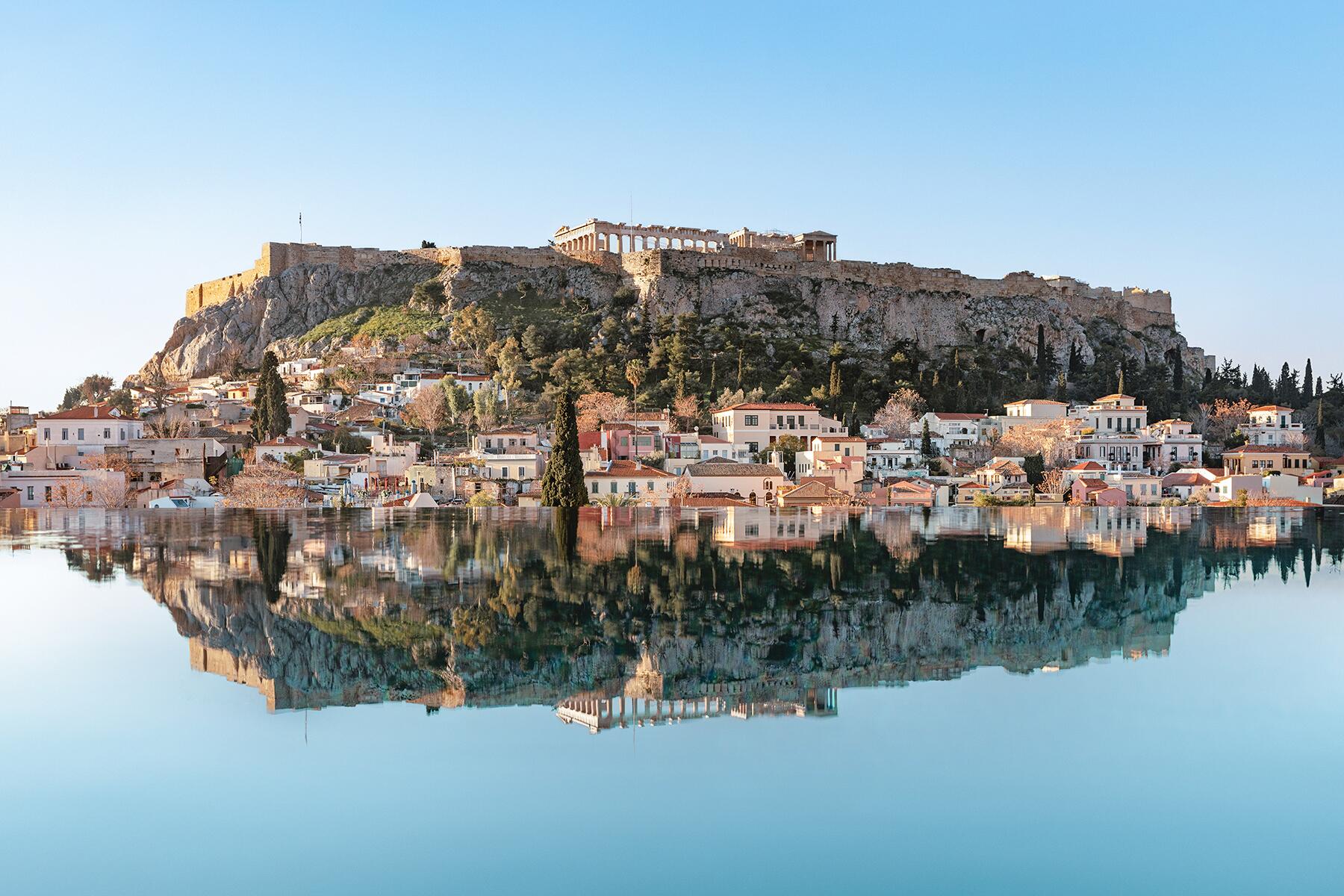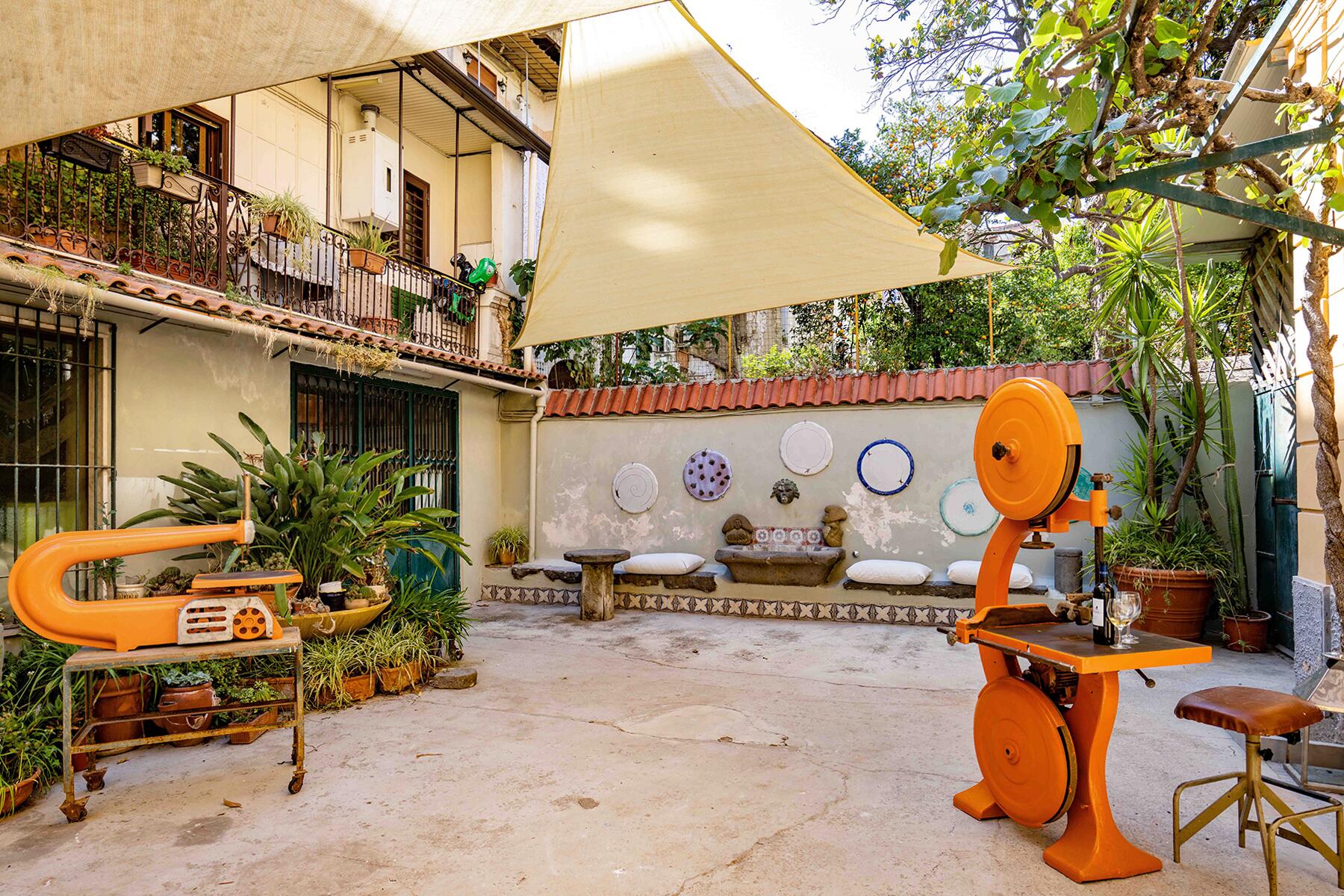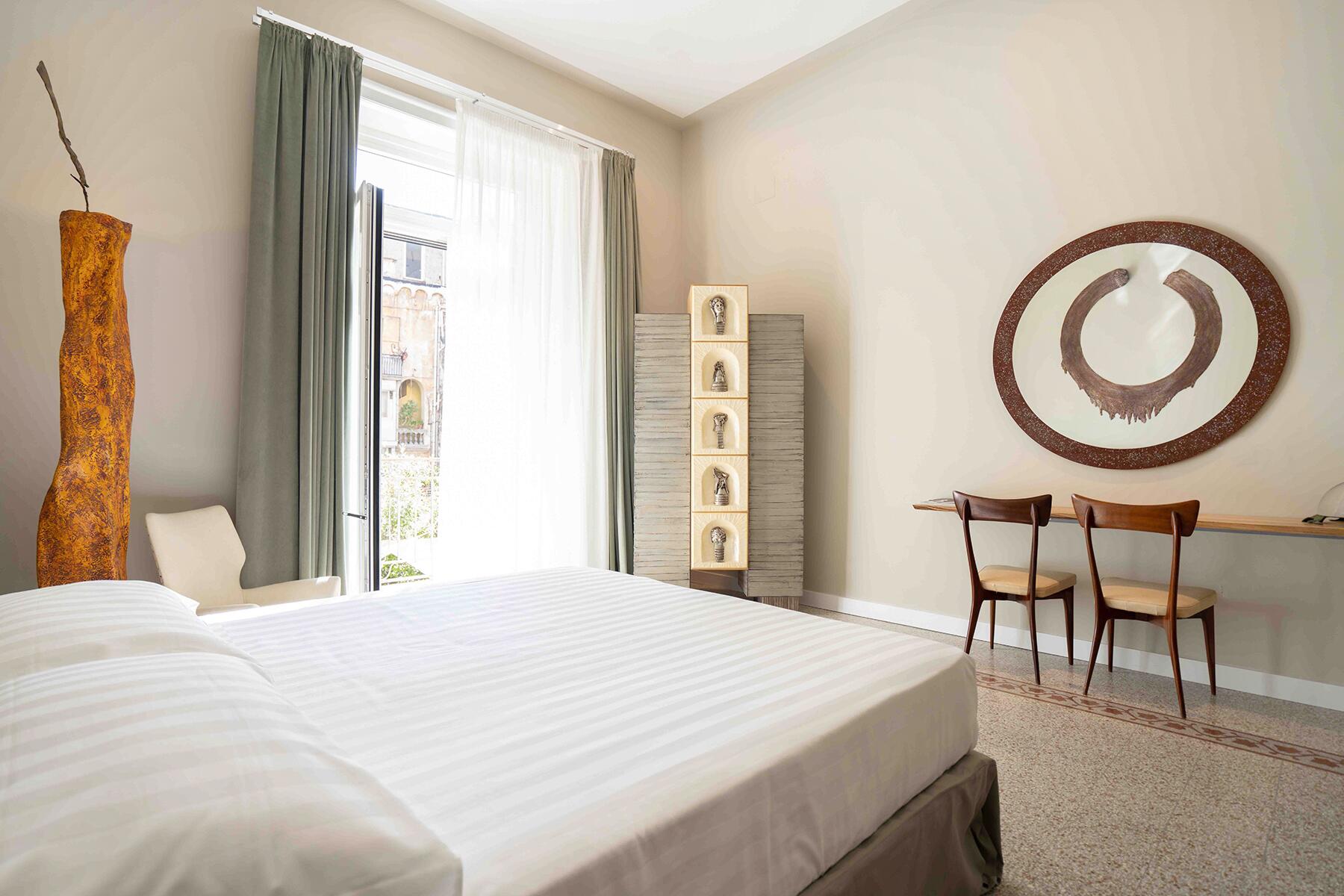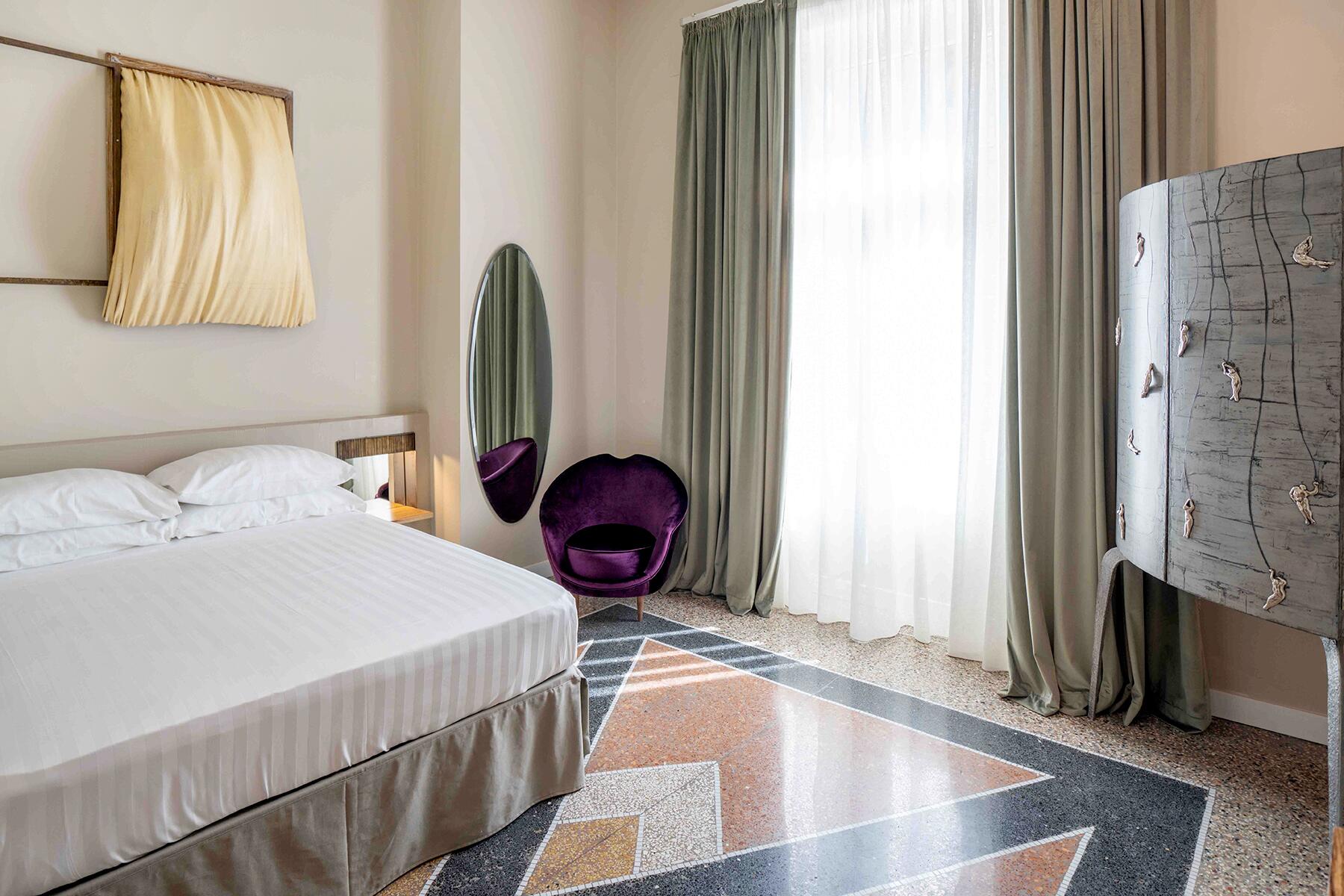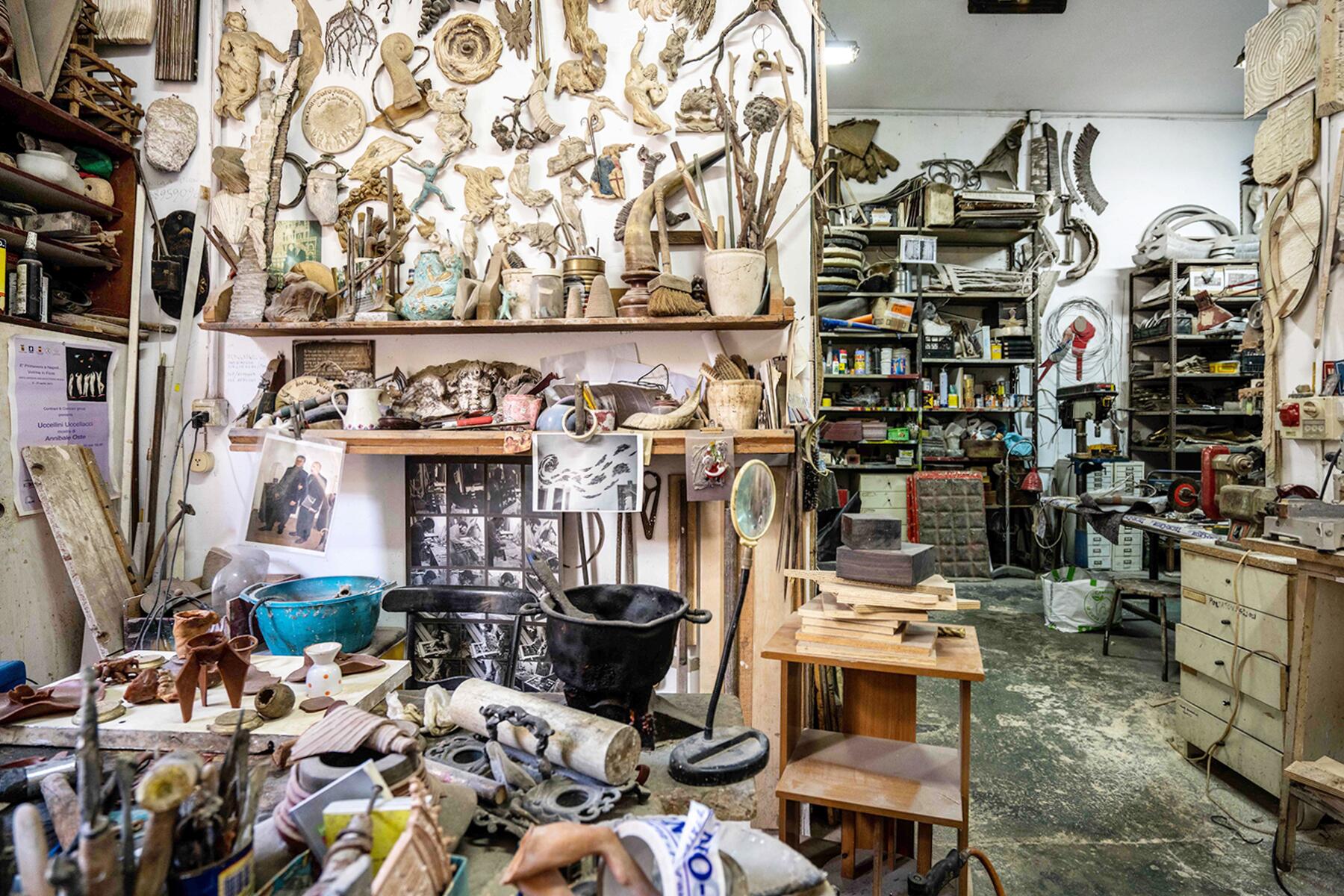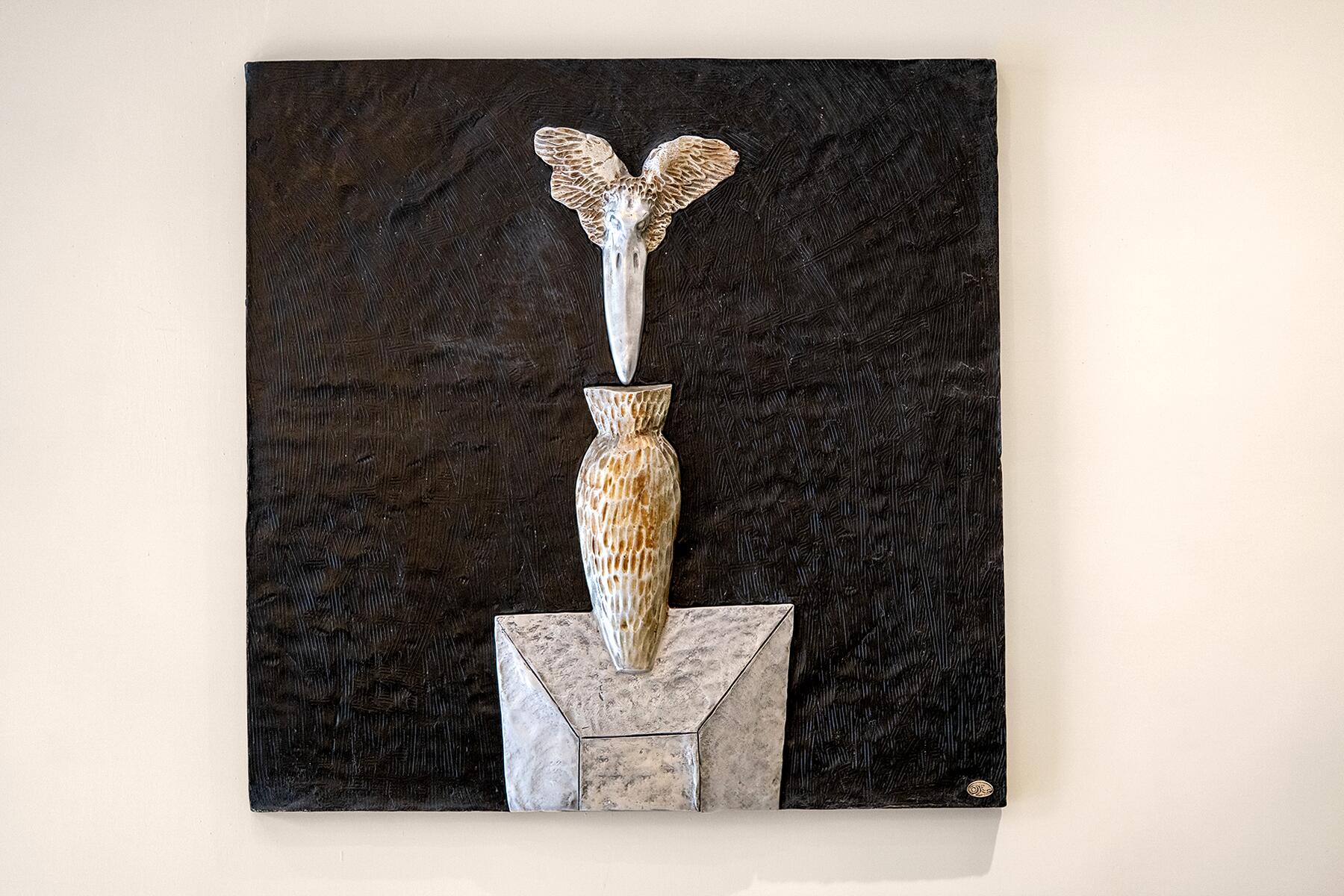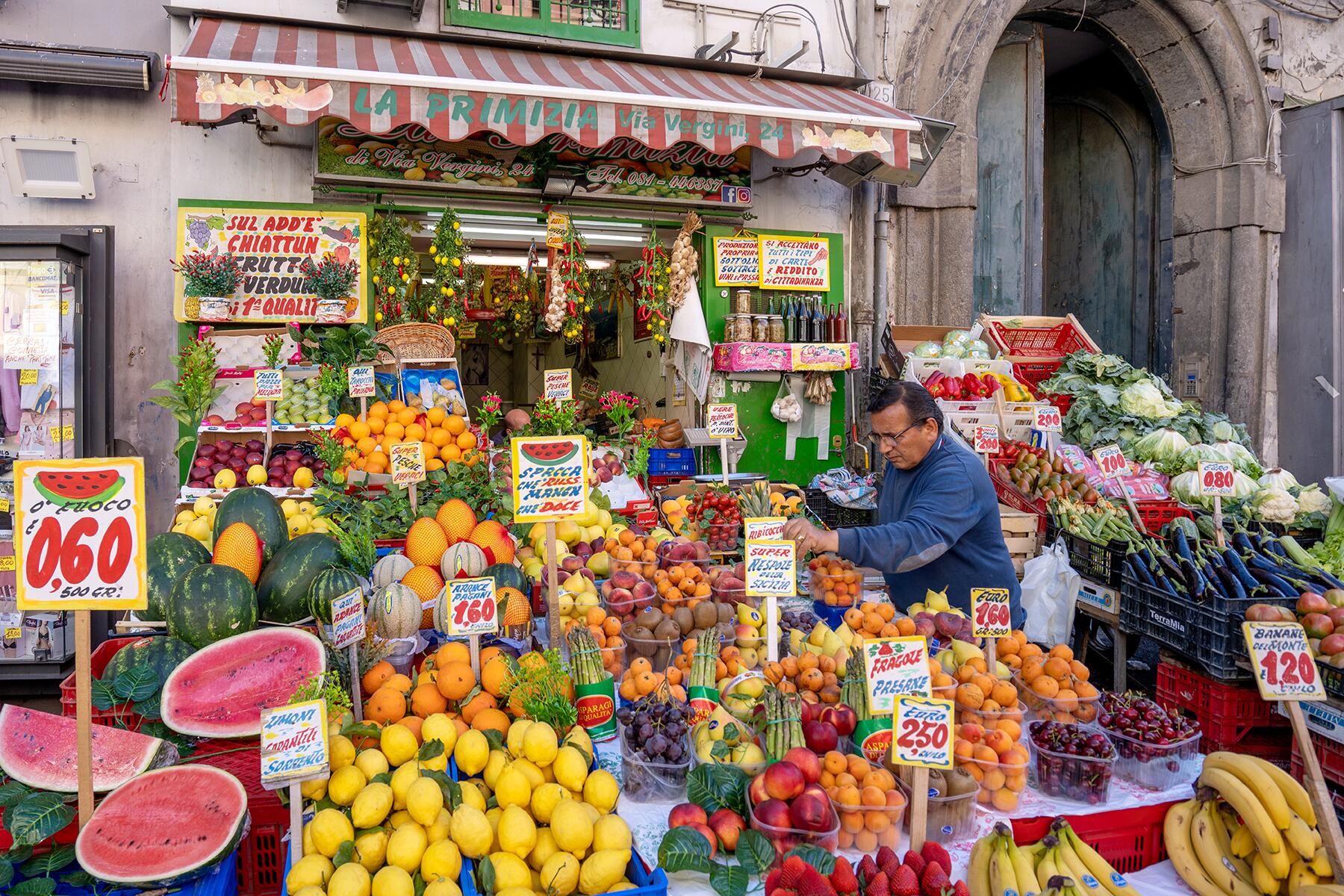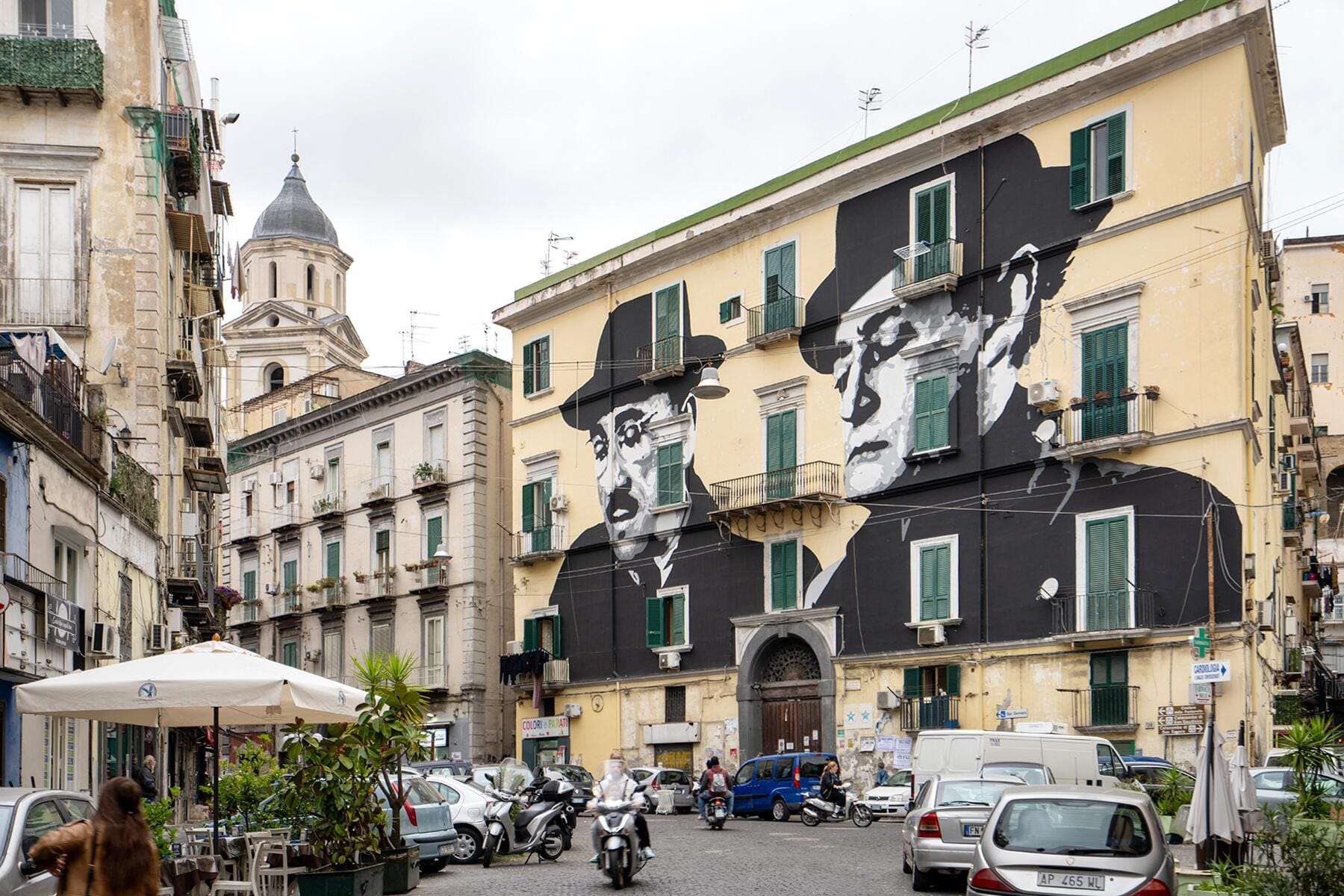…And that's only the beginning of the artful experience that awaits you in Naples, Italy.
If you’ve watched auteur Paolo Sorrentino’s Oscar-nominated opus, The Hand of God, then you are likely to be acquainted with the Neapolitan spirit and its ethos. The first half of the film may play somewhat like an opera buffa to the uninitiated, but spend even an hour in Napoli and you’ll recognize the tableau vivant the director paints as a true-to-life distillation of the anima of this historic city and its bright-hearted people. Breathe the air of Napoli and you’ll understand that what may read as Sorrentino’s attempt at hot-hued surrealist commedia al’ Italiana might as well be Italian (Neapolitan) neorealism topped with such comedic bravura that is as Neapolitan as pizza itself. And it is precisely this larger-than-life humanistic energy that engulfed me during my recent visit to Napoli. It is only a slight exaggeration to say that my initiation into the city, having arrived thoroughly exhausted after harrowing travel mishaps the night before, was a baptism of all-consuming fire, awakening within me a conflagration of passion for all things Napule. Sure, I had been to Naples before, but each time only passing through—as many a traveler who considers the city merely a gateway is wont to do—to arrive at the usual southern Italian haunts: Capri, the Amalfi Coast, Sorrento, and hotspots of their ilk.
But this time, I decided to stay in Napoli at the Atelier Inès Arts and Suites, a boutique hotel whose tawny-colored walls sprout from the earth of the historic Vergini district.
Recommended Fodor’s Video
Owned by Tunisian artist Inès Sellami and her Neapolitan husband, Vincenzo Oste—jeweler, designer, and sculptor—the hotel is set within the vestiges of a turn-of-century open-air cinema and theater. The edifice, as it now stands, was built in 1947 by Vincenzo’s great-grandfather and served as the Oste family home. Since 2021, Vincenzo and Inès have run the property as an albergo, with each of its six suites possessing a unique personality, not unlike the cosmic cast of Neapolitan characters who would animate my stay. Each room is anchored by wild art and whimsical furniture designed by Vincenzo and his late father and world-famous sculptor, Annibale Oste.
In one spacious room, for instance, the curved headboard of the bed is a sculpture named “Marea” wrought by Annibale Oste in 1981. The bronze and fiberglass piece resembles a frothing blue sea and is especially wild in comparison to the bookcase that sits in the corner of the room. Reminiscent of a fortress of Jenga blocks, Annibale Oste named this 2009 creation (realized in a limited edition of nine pieces), “La Torre de Sapere” (“The Tower of Knowledge”).

That Saturday morning, whatever exhaustion was poisoning my mood upon my arrival at the hotel was immediately neutralized by Inès’ vigor and vitality. A most zealous welcome awaited me as I finally stepped through the iron gates of Atelier Inès with my heavy baggage, both literal and figurative, in tow.
“She’s finally arrived!” Inès exclaimed, hugging me with the warmth of an old friend. And although breakfast hours were long past, a table had been set for me beneath the fronds of a pomegranate tree in the courtyard, whose fresh green foliage contrasted against the pale-yellow paint of the building, with its patina of history, rendering the perfect metaphor of how Atelier Inès (and Napoli, in general) juxtaposes the ancient and the new.
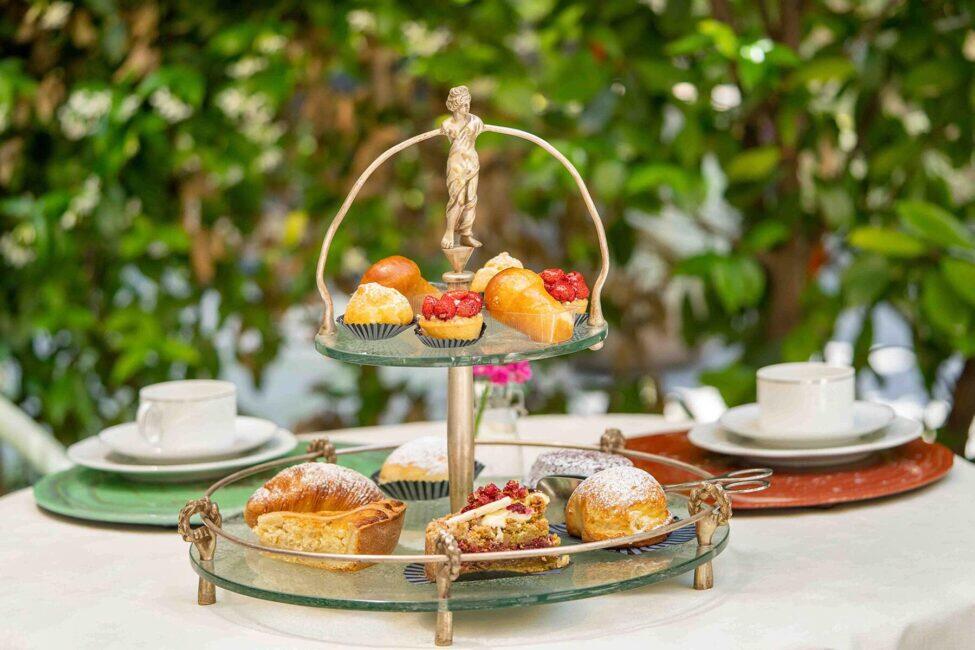
On the table was a set of cutlery designed and sculpted by Vincenzo himself, the heavy bronze handles of each piece in the set a different iteration of a freeform spiral. Digging into a delicious omelet with the artful fork and knife, and chasing those bites with that of a scrumptious homemade torta, Inès broke down the philosophy of their hotel.
“Our concept of hospitality is completely different,” she explained to me. “Sharing our art, touching the art, seeing where everything is made—this is our focus. The difference here is that you can live the art.”
Whether her concluding statement is missing the word “with” or intended as a rhetorical flourish, both its ideas are true, I find. Yes, at Atelier Inès, you get to live—to share space—with the Oste’s objets d’ art, sleeping in rooms adorned by pieces conceived and constructed on-site. But also, in living this experience itself, you get to live art, to live as art, and to inhabit art as if thrust into the quintessence of art itself.
No sooner had I finished breakfast than did Inès light up with an idea: What was I doing right that minute?
“Well, I’d love a shower and a nap,” I thought. But before the thought could be transposed into words, Inès suggested that Vincenzo—who happened to have a bit of free time before he started working on the mixed media table he was currently engrossed in—could take to me to see Napoli on his motorcycle. Never one to importune fortune, I agreed with alacrity, abandoning all reason and any inclination toward sleep, I found myself propped in the pillion of Vicenzo’s motorcycle, ready to see his Naples his way.
There is a certain sumptuousness to (re)discovering a place via an open-air vehicle that glides at the specific pace and with the dexterity of a motorbike. There are sundry ways to meet a city, to see a city, and each vantage point unlocks its own truths, I dare say. In this instance, besides the cultural connection of the bike (or Vespa) to Italy, having Napoli unfold before and around me in this particular manner—enshrouded in nothing but air; no barrier between my heartbeat and that of the city; the speed of movement on the machine and the ensuing breeze—was akin to simultaneously viewing and living in a cinematic montage. In a sense, it felt like reality had been sped up and slowed down all at once, such that I could melt into the moment’s very essence through the erasure of time. I was essentially injected into Sorrentino’s film months before I would even see it. And it is no wonder that in two of the most breath-abating scenes in that film, Napoli unfurls on the screen from the point of view of Vespa and a Yamaha XT 600 motorcycle respectively.
With Vincenzo leading the way, the gates of Napoli flung open for me. Talk about having the proverbial keys to the city! Inès and Vincenzo have a rapport with every artist, every chef—even every glovemaker–in town. Pausing our ride in front of the storied pizzeria Concetinna ai Tre Santi—in front of which a queue of eager customers snaked onto the streets— the restaurant’s owner, Ciro Oliva (a pizza chef so in demand, he was summoned to feed the Italian national football team at camp during the Euro 2020 tournament) stepped out in a gust of conviviality, lancing sharp jokes and piquant persiflage. He insisted that my friends (who would later be joining me from Le Marche) and I come by for lunch.
You haven’t truly lived until you have ventured into Concettina ai Tre Santi on a frenzied afternoon, sat with a coterie of friends on the restaurant’s back terrace and proceeded to be served, by Ciro himself, a tasting menu that included the most decadent pizze. Between bites of caviar and salmon topped flatbread, and, of course, pizza Margherita, Ciro regaled us with sprightly repartee—that of a conductor possessed by the passion for his lyrical food in conversation with us, his orchestra of indulgers— and, quite literally, fed us truffles: he shaved them directly into our mouths!
I’ll remember his Sott’n’gopp, a Neapolitan specialty that’s a sort of inverted fried pizza, which he layered tableside as he encouraged us to eat it with our hands by tearing the fried dough and using it to sop up the meaty tomato sauce with it: music to my Ghanaian ears (and, let me tell you, a symphony on the tongue as well!). Ciro Oliva is considered, one of the best, if not the best, pizza chefs in the world by merit of his culinary prowess, but I’ll remember his animated aura, his incisive wit, and his kindness just as much as the memory of that Sott’n’gopp still lingers on my tongue. This entire orchestration, a dizzying and grounding one all at once, is easily one of the most memorable meals of my brief life: for the laughs, and yes, for the most laudable pizza in Napoli.
Back on the motorcycle, bobbing and weaving through the deliciously decaying alleys and streets of Naples, Vincenzo and I passed many a historical site, including the Palazzo dello Spagnolo (the famed late baroque/rococo-style palazzo just 50 meters from the hotel) until we found ourselves in the almost literal oasis of Museo di Capodimonte. We didn’t have ample time to venture in to see the Caravaggio that calls the museum’s halls home, but we did have enough time to stand in the palm-fringed garden and look out onto the horizon at Capri and Sorrento, clear as day in the distance, as Vincenzo told reminisced about his childhood arcadian days spent in the clutches of this breezy beauty.
We hopped back on the bike and stopped next in the Quartieri Spagnoli (Spanish Quarter), home to the city’s altar to one of its many gods. Of all the gods within the Neapolitan pantheon, perhaps the most venerated is not Neapolitan or Italian at all. That god is in the person of Diego Armando Maradona, the Argentinian soccer hero who played for Napoli and won the club two Italian Serie A titles, the Copa Italia, a UEFA Cup, and an Italian Super Cup. If you’ve watched director Asif Kapadia’s documentary on the player, you might know that so real was the apotheosis of the man that after a physical examination, a nurse once secreted away a vial of Maradona’s blood onto a shrine in the Duomo di San Gennaro. Even the aforementioned Sorrentino film’s title is an allusion to the infamous goal Maradona scored against England in the 1986 World Cup.
And so, it is no surprise that this outdoor shrine dedicated to all things Maradona, centered around an imposing mural of the man in his Napoli kit, is hallowed ground in the city. The deification of a man is a curious phenomenon, but one need not have grown up in the era of Maradonna (though I did) or be a football fan (though I am) to understand, from the moment one sets foot on this living effigy of the player, the significance of the man to the religion that is calcio (football) in Naples.
The final stop on our ride was the Gran Caffè Gambrinus, a coffee house founded in 1860, which faces the popular Piazza del Plebiscito. Seeing me with Vincenzo, the café’s debonair manager, Massimilliano Rossati, offered to take us into the belly of the beast to observe the concoction of the Gambrinus’ famous pastries. He insisted I try my hand at making my own Neapolitan coffee, which I did (but did not dare to drink my folly, instead opting for a cup crafted by one of the veterans).
We finally headed back toward Atelier Inès, at least an hour later than we had planned to—but this is Naples: here one goes with the flow and is never constricted by such inconveniences as the clock. As we rode past the esplanade with the glistening waters of the Bay of Naples guiding us home, we passed no fewer than three newlyweds in full regalia enjoying photo ops in the sun. At each instance, Vincenzo encouraged us to shout “Auguri!” (“Congratulations!”) to the couples, counting me down each time with the utterance of, “Natasha, sei pronta?” (“Natasha, are you ready?”)
Born ready!

“Auguriiii!” We cheered as we whizzed past, the wind carrying our congratulatory blessings from our lips into eternity.
Still reeling from the sheer electricity of the ride, we retired to Vincenzo’s workshop, where all guests of the hotel had the opportunity to try their hand at making something. Here, with the mind of an artist and the capacity of an artisan, Vincenzo extemporaneously carved the form of a would-be earring into wax, letting me in on his artistic process. I tried on prototypes of Vincenzo’s striking rings while he and Inès waxed poetic about Naples and why I should choose it as my home base after I revealed to them my not-so-latent desire to call Italy home one day.
“Un pochino di Ghana e anche qua,” says Vincenzo, his voice wet with emotion. Translation: a little bit of Ghana is here. “Un pochino di New York e anche qua! E pazza!” And a little bit of New York is also here. It is crazy!
He switches into romantically accented English. “You think you are in Europe. No! No Europe! It is Napoli. It’s fantastic! It’s a different world!”
Consider me converted by Vincenzo’s sermon, for I returned once more during my two-week stay in Italy. Consider me indoctrinated by the art and heart of Napoli for I can’t wait to be painted into the shadow of Mt. Vesuvius once again.


